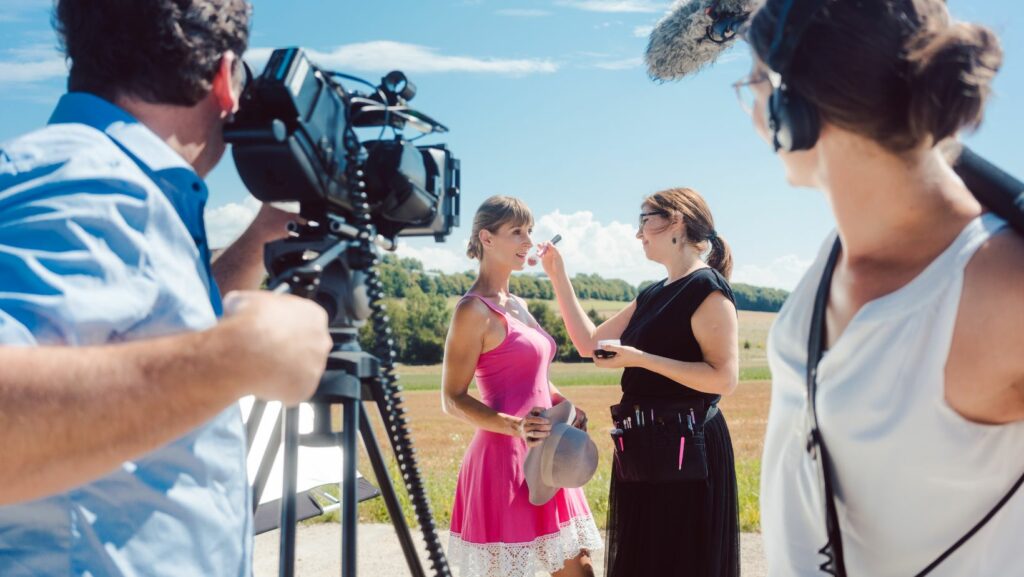 In today’s digital age, video production has become an essential tool for storytelling, marketing, and entertainment. With the rapid evolution of technology, creators now have access to a myriad of techniques that can elevate their content from ordinary to extraordinary. Whether it’s a Hollywood blockbuster or a YouTube vlog, understanding the fundamentals of video production techniques can make all the difference in capturing an audience’s attention. From pre-production planning to post-production editing, each stage of video creation offers unique opportunities to enhance the final product. Lighting, sound, camera angles, and special effects are just a few elements that can significantly impact the viewer’s experience. By mastering these techniques, creators can convey their message more effectively and leave a lasting impression on their audience. As the demand for high-quality video content continues to grow, staying informed about the latest trends and innovations in video production is crucial. This article explores essential techniques that can help both novice and experienced creators produce compelling visual stories.
In today’s digital age, video production has become an essential tool for storytelling, marketing, and entertainment. With the rapid evolution of technology, creators now have access to a myriad of techniques that can elevate their content from ordinary to extraordinary. Whether it’s a Hollywood blockbuster or a YouTube vlog, understanding the fundamentals of video production techniques can make all the difference in capturing an audience’s attention. From pre-production planning to post-production editing, each stage of video creation offers unique opportunities to enhance the final product. Lighting, sound, camera angles, and special effects are just a few elements that can significantly impact the viewer’s experience. By mastering these techniques, creators can convey their message more effectively and leave a lasting impression on their audience. As the demand for high-quality video content continues to grow, staying informed about the latest trends and innovations in video production is crucial. This article explores essential techniques that can help both novice and experienced creators produce compelling visual stories.
Video Production Techniques
Effective video production techniques enhance storytelling by creating engaging visuals. These techniques form the foundation of compelling content, supporting the narrative through visual and auditory elements.
Pre-Production Planning
Pre-production planning involves outlining the video’s objectives, scriptwriting, and storyboarding. It sets the stage for a successful shoot by ensuring clarity in creative vision and logistics. Securing locations, casting talent, and sourcing equipment are key tasks during this phase.
Camera Angles and Movements
 Camera angles and movements influence the viewer’s perception. High-angle shots can depict vulnerability, while low-angle shots convey power. Panning or dolly shots add dynamic motion, maintaining viewer engagement. Selecting the appropriate angle complements the story’s tone.
Camera angles and movements influence the viewer’s perception. High-angle shots can depict vulnerability, while low-angle shots convey power. Panning or dolly shots add dynamic motion, maintaining viewer engagement. Selecting the appropriate angle complements the story’s tone.
Editing refines raw footage, ensuring seamless transitions and pacing. The use of software like Adobe Premiere Pro or Final Cut Pro aids in creating polished content. Adding effects, color grading, and soundtracks enhances the final product, aligning with the video’s theme.
Special Effects Integration
Incorporating special effects elevates production value. Green screens allow versatile backgrounds, while CGI brings fantasy elements to life. Effects should enhance, not overshadow, the narrative to maintain authenticity.
Staying Updated with Trends
Staying current on industry trends ensures content remains relevant. Techniques evolve with technological advancements, offering new possibilities in video production. Adapting to trends like virtual reality or 4K resolution keeps creators competitive in the digital landscape.
Pre-Production Planning
Pre-production planning sets the foundation for a successful video project. It involves organizing all essential elements before actual filming begins, ensuring a smooth production process.
Storyboarding
 Storyboarding transforms ideas into visual sequences. It consists of creating a series of drawings or images that represent each shot of the video. Storyboards serve as a visual script, outlining the flow and key scenes. This process helps clarify the director’s vision and guides the production team during filming. Different camera angles and movements can be tested on paper, saving time and resources during actual shooting.
Storyboarding transforms ideas into visual sequences. It consists of creating a series of drawings or images that represent each shot of the video. Storyboards serve as a visual script, outlining the flow and key scenes. This process helps clarify the director’s vision and guides the production team during filming. Different camera angles and movements can be tested on paper, saving time and resources during actual shooting.
Scriptwriting provides the narrative structure for the video. It involves drafting dialogues and scenes, ensuring that the story aligns with project objectives. A well-written script includes engaging content, clear dialogues and well-paced scenes. The script acts as a blueprint for production, guiding actors and crew on location. Consistency in tone and language ensures that the video communicates its intended message effectively.
Production Process
Effective video production relies on a structured approach, encompassing various stages to ensure a cohesive and high-quality final product.
Camera Techniques
Mastering camera techniques enhances visual storytelling. Operators leverage camera angles and movements, like tracking or dolly shots, to guide viewer focus and convey emotion. Depth of field adjustments create emphasis, while varied shot sizes, such as close-ups or wide shots, articulate narrative detail. Selecting the right camera equipment, considering resolution and sensor size, plays a crucial role in achieving desired aesthetics.
Lighting Setup
Proper lighting setup shapes mood and enhances visual quality. Professionals use three-point lighting, including key, fill, and back lights, to craft depth and dimension. Softboxes and diffusers minimize harsh shadows, providing uniform illumination. Color temperature adjustments, accomplished through gels or LEDs, impact the scene’s tone, leading to visually cohesive content aligned with the story’s mood.

